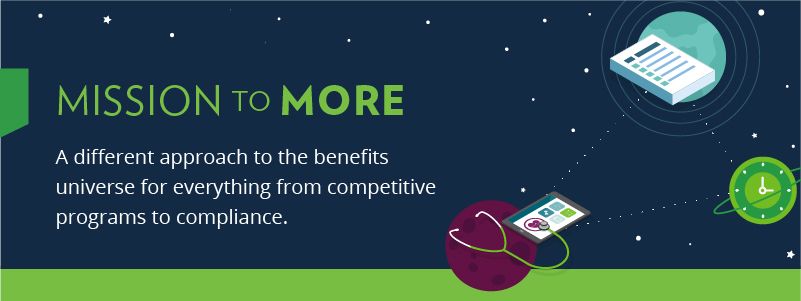Blog
California SDI: What Upcoming Changes Mean for Employers and Employees
There are more changes to California’s State Disability Insurance (SDI) program, including Paid Family Leave (PFL). Learn how they affect you and your employees.
More changes are coming up for California’s State Disability Insurance (SDI) program, which includes Paid Family Leave (PFL) benefits. This article offers an overview of those changes to help you understand how they affect you and your employees.
| At-a-Glance Read time: 5 minutes |
||
|---|---|---|
California SDI Overview
First, let’s look at some background. California’s SDI program provides wage replacement benefits for workers who take time off from work for the following reasons:
- A non-work-related illness or injury (including pregnancy).
- Under the PFL program to care for a seriously ill family member, bond with a new child, or for certain needs related to a family member’s active military duty.
Governor Gavin Newsom signed SB 951 into law in September 2022, introducing big changes to the state’s existing SDI program.
First, the increased SDI benefit percentage levels that began in 2018 (up to 60% to 70% of Average Weekly Wages) were extended through the end of 2024.
Also, beginning on January 1, 2025, wage replacement rates will increase to 90% for low-wage workers. This increase is not to exceed the maximum workers’ compensation temporary disability indemnity weekly benefit amount. It will apply to workers making 70% or less of the state average weekly wage. This level is an increase from 70% in 2023.
Other workers will receive 70% wage replacement that should not exceed the maximum workers’ compensation temporary disability indemnity weekly benefit amount (63% of the state average weekly wage). This level is up from 60% in 2023.
The table below provides an overview of the upcoming changes to the SDI program.
| 2023 | 2024 | 2025 | |
|---|---|---|---|
| SDI Withholding Rate | 0.9% | TBD Forecasted: 1.1%2 |
TBD |
| Taxable Wage Limit | $153,164 | None | None |
| Maximum Withholding | $1,378.48 | No Limit | No Limit |
| Benefit Rate for Lower Wage Earners (those earning 70% or less than the SAWW1) | 70% | 70% | 90% |
| Benefit Rate for Higher Wage Earners (those earning over 70% of the SAWW) | 60% | 60% | The greater of 70% of wages or 63% of SAWW |
| Maximum Weekly Benefit | $1,620 | TBD Forecasted: $1,6982 |
TBD |
| Minimum Weekly Benefit | $50 | $50 | $50 |
How Is the SDI Program Funded?
California’s SDI program is funded through a payroll deduction from wages, and benefits are paid out to eligible individuals based on a percentage of their annual wages (up to the wage limit of $153,164 in 2023).
The maximum weekly benefit under the program is set at the maximum workers’ compensation temporary disability indemnity weekly benefit amount. This California Department of Industrial Relations’ Division of Workers’ Compensation adjusts this amount each year.
What Is the Expected Impact on Employees?
Lower-wage workers will benefit the most from the changes of SB 951. Here is a summary.
- The lowest income earners can expect to receive greater benefits because up to 90% of their lost wages may be replaced.
- The highest income earners will be required to pay more into the program (after the removal of the wage cap), while only being able to receive the same maximum weekly benefit as all other higher income earners (e.g., $1,698), without regard to their actual wages or their payment into the program.
Example: Employee Earning $200,000 Annual Salary
| 2023 | 20243 | Impact | |
|---|---|---|---|
| Annual Employee Contribution | $1,378.48 | $2,200 | +$821.52 |
| Weekly Employee Benefit | $1,620 | $1,698 | +$78 |
This table depicts estimated contributions and benefits for illustrative purposes only.
Is There an Alternative Plan for Employers?
As an alternative to the SDI program, some employers (especially those with many workers earning more than $153,164) may consider opting out of the state-run program and implementing a private Short-Term Disability plan or Voluntary Plan (VP).
A VP may be able to reduce or eliminate the adverse financial impact on higher earning employees, while continuing to provide the same benefit payments as the SDI program to all eligible employees when they are unable to work.
VPs offer a degree of flexibility and can be structured to provide higher benefits or lower employee contributions than required by the state program. For example, the VP can set a maximum annual wage limit that puts a ceiling on the total contribution amounts that employees must pay into the disability plan. Additionally, employers may have some flexibility on how to structure the employee contributions so that future disability payments are not subject to taxes for the recipient.
VPs can be fully insured or self-insured, but they must be pre-approved by the state. To receive state approval, the VP must do the following:
- Offer all the same benefits with at least one better benefit than the state program
- Cost employees no more than the state program
- Offer benefits to all eligible California employees of the employer
- Match any future benefit increases SDI implements due to new regulations.
It’s also important to note that a majority of employees must consent to the VP in writing, and even when VPs are offered, employees will maintain the right to reject the VP and instead participate in the state SDI.
| TPAs for self-insured VPs: The Hartford, Larkin, MetLife, Prudential, Sedgewick, Tristar |
If you have questions about the upcoming changes to California SDI or whether a VP may be an option for your company, reach out to your Woodruff Sawyer representative for more information. Our team is staying on top of these changes and can assist you in making the best decision for your company and employees.
1Acronym for California’s State Average Weekly Wage
2“May 2023 Disability Insurance (DI) Fund Forecast,” Employment Development Department of the State of California, Page 6, available here.
3Contribution and maximum benefit estimations based on the “May 2023 Disability Insurance (DI) Fund Forecast,” Employment Development Department of the State of California, Page 6, available here.
Our Mission to More series offers guidance from leading specialists on what employees want and how employers can adapt to the new benefits universe. For more guidance on trends and emerging benefits solutions, sign up for Woodruff Sawyer’s Benefits newsletter, which includes all Mission to More articles.
Authors
Table of Contents













